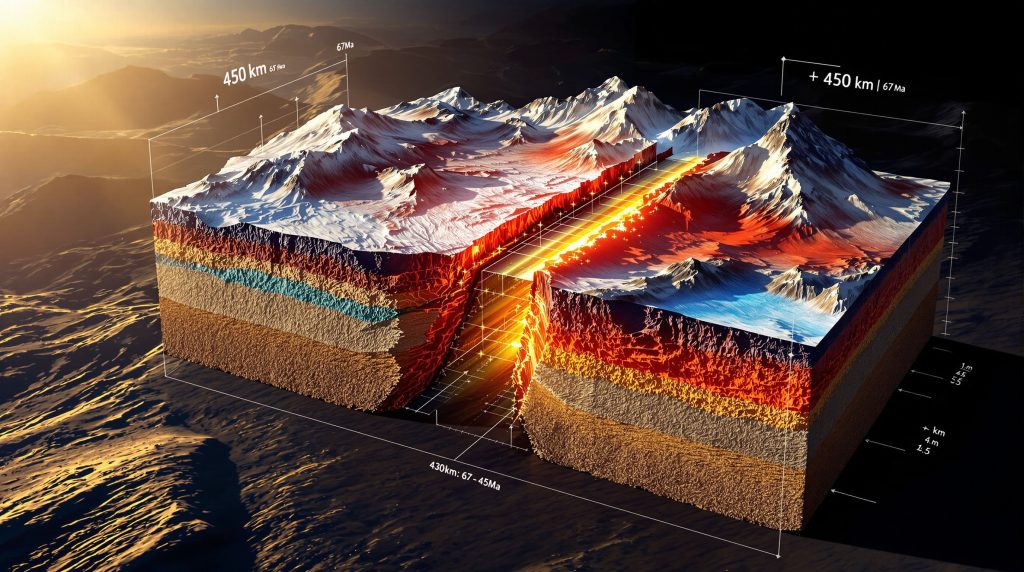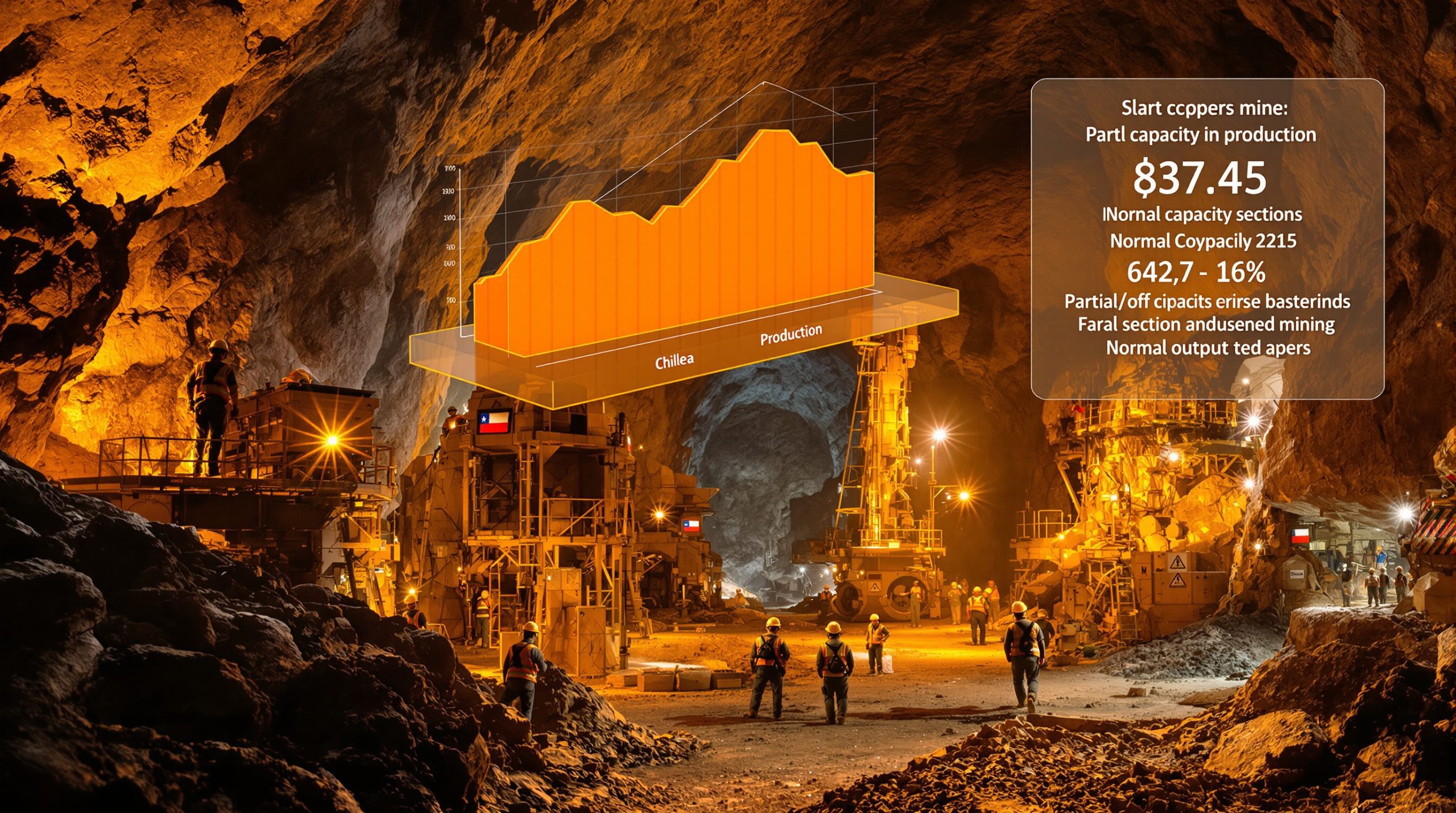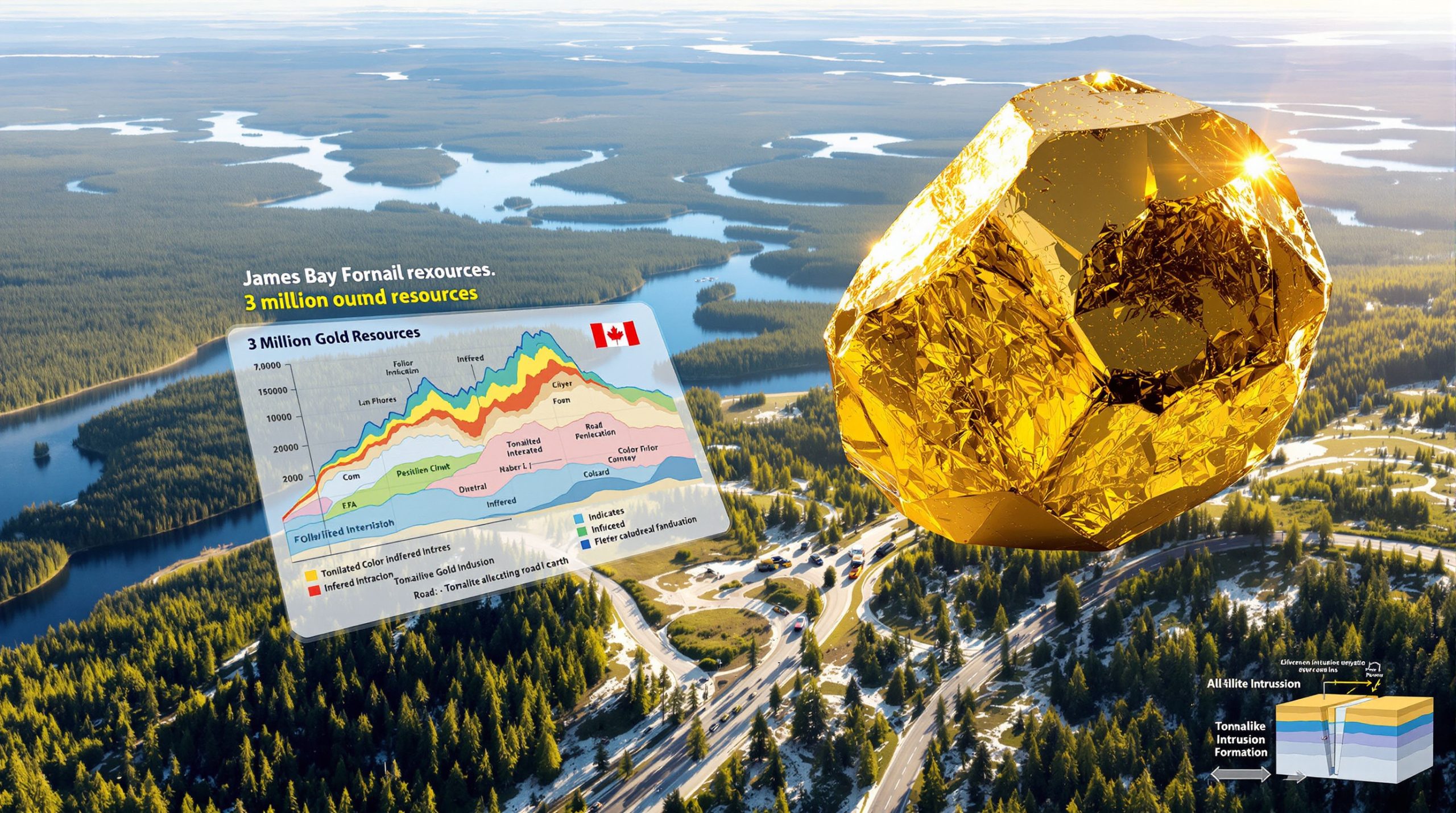How Do Geologists Identify and Measure Strike-Slip Fault Displacements?
Strike-slip fault analysis represents one of the most challenging yet rewarding aspects of structural geology. These lateral-motion fault systems can transport crustal blocks hundreds of kilometers from their original positions, fundamentally reshaping continental margins. Understanding how geologists identify and quantify these displacements provides crucial insights into Earth's dynamic history.
Key Geological Markers for Displacement Analysis
The identification of reliable geological markers forms the foundation of any strike-slip fault displacement analysis. These markers must possess distinctive characteristics that allow confident correlation across significant distances.
Offset igneous rock bodies serve as premier markers due to their distinctive compositions, textures, and isotopic signatures. Batholiths and plutons with unique mineralogical fingerprints provide robust correlation points, especially when they have precise radiometric ages.
Displaced metamorphic belts with matching protolith assemblages and metamorphic history matching offer compelling evidence of pre-displacement continuity. When rocks on opposite sides of a fault show identical pressure-temperature-time paths, they likely shared a common history before fault movement separated them.
Truncated thrust faults provide excellent structural markers, as their distinctive geometry and associated rock packages can be recognized across fault boundaries. These pre-existing structures, when offset by later strike-slip faulting, create clearly identifiable separation patterns.
Late Cretaceous sedimentary basins often preserve critical timing relationships for fault activity. Their stratigraphic patterns, deformation styles, and depositional ages can bracket fault movement periods with remarkable precision.
Cross-cutting relationships between faults and dated igneous bodies establish critical timing constraints. When a pluton of known age intrudes and cuts across a fault zone, it provides a minimum age for fault activity.
Advanced Dating Techniques for Fault Activity
Modern displacement analysis relies on sophisticated chronological methods that can precisely date fault-related rocks and minerals.
Uranium-lead monazite geochronology has revolutionized our ability to date metamorphic fabrics in shear zones. This technique can pinpoint metamorphic events spanning 70-55 million years ago in fault-affected rocks, revealing temporal patterns where younger ages often appear structurally lower in fault zones.
Argon-argon dating of fault-generated pseudotachylite (frictional melt produced during earthquakes) provides direct evidence of seismic events along fault zones. This technique has documented approximately 30-million-year-old fault activity in regions like the Work Channel area.
White mica dating spans critical intervals for many fault systems, with ages ranging from 85-50 million years for some major fault zones. These minerals often grow or recrystallize during fault movement, making them excellent chronometers.
Cross-cutting relationships with precisely dated plutons establish minimum ages for fault activity cessation. The time-transgressive pattern of plutons cutting fault zones from west to east in some systems reveals the sequential deactivation of fault segments.
What Are the Major Strike-Slip Fault Systems in the North American Cordillera?
The North American Cordillera hosts several world-class strike-slip fault systems that have accommodated substantial crustal reorganization since the Late Cretaceous. These fault networks have cumulative displacements exceeding 1,500 kilometers, fundamentally reshaping western North America.
The Tintina Fault System
The Tintina Fault extends from Alaska through Yukon Territory as a major northwest-trending structure with approximately 430 kilometers of right-lateral motion. This displacement has been established through correlation of the Inkanu thrust fault, which is truncated by the Tintina and can be matched across the fault zone.
Late Cretaceous igneous rocks provide additional piercing points across the Tintina system. These distinctively aged plutonic bodies appear on both sides of the fault with offsets matching the structural markers.
The timing of Tintina Fault activity primarily spans 67-45 million years ago, with significantly reduced slip rates afterward. While the fault shows evidence of continued activity into more recent times, the majority of displacement occurred during this earlier interval.
The Tintina represents the inboard margin of a complex fault network that accommodated substantial crustal translation along the northwestern margin of North America.
The Border Ranges Fault System
The Border Ranges Fault System exhibits some of the largest documented displacements in the Cordillera, ranging from 600-900 kilometers depending on which correlation points are used. This impressive right-lateral fault zone forms a fundamental boundary between different crustal domains.
The primary markers used to establish this displacement are 170-million-year-old diorite bodies. These distinctive igneous rocks appear in the Chugach Mountains of Alaska and can be correlated with similar bodies on Chichagof Island (600 km displacement) or Vancouver Island (900 km displacement).
Timing of Border Ranges activity spans approximately 85-50 million years ago, based on white mica ages from metamorphic rocks within the fault zone. This extended period of activity indicates a long-lived structure that played a crucial role in Cordilleran tectonics.
The Border Ranges Fault exhibits a fascinating sequential deactivation pattern from west to east. Plutons dated at approximately 58 million years old crosscut the fault on Kodiak Island, while in Southeast Alaska, crosscutting plutons yield ages around 50 million years. This time-transgressive pattern indicates the fault progressively shut down from west to east.
The Denali Fault System
The Denali Fault System shows approximately 480 kilometers of right-lateral displacement since about 52 million years ago. This major fault zone cuts through Alaska and Yukon Territory, representing one of the most significant structures in the northern Cordillera.
Multiple correlated rock packages define this displacement, including the Isa batholith/Ruby Ranges batholith, McLaren schist/Kluane metamorphic assemblage, and Clearwater metasediments/Dezadeash Formation. These paired rock units provide compelling evidence for large-scale crustal translation.
Recent uranium-lead monazite geochronology has documented remarkably similar metamorphic histories across the fault. Rocks on both sides experienced contemporaneous metamorphism between 70-55 million years ago, with younger ages systematically appearing lower in the structural section. This matching metamorphic history strongly supports the correlation of these now-separated rock packages.
The Denali Fault truncates a fundamental geological boundary – the suture between rocks affiliated with the North American continent and those associated with the insular terranes or Wrangellia composite terrane. This relationship provides critical context for understanding the regional significance of the fault.
How Does Displacement Vary Along Strike of Major Fault Systems?
One of the most fascinating aspects of Cordilleran strike-slip faults is how displacement patterns change along their length. These variations provide crucial insights into fault mechanics, evolution, and their relationship to broader tectonic processes.
Western Alaska's Distributed Deformation
Western Alaska presents a remarkable example of distributed deformation across multiple parallel fault strands. Rather than concentrating motion on a single structure, this region accommodates displacement across a network of subparallel right-lateral faults.
Individual fault displacements in this network range from tens to approximately 100 kilometers each. The Iditarod-Nixon Fork fault exemplifies this pattern, showing approximately 90 kilometers of offset in volcanic-plutonic complexes that can be matched across the fault.
The cumulative displacement across this fault network totals approximately 400 kilometers since about 70 million years ago. This distributed pattern demonstrates how crustal deformation can be partitioned across multiple structures rather than concentrating on a single fault plane.
This pattern raises important questions about how crustal blocks deform internally while accommodating large-scale displacement, and how strain transfers between adjacent fault systems.
Southeast Alaska to Washington State Displacement Gradient
Moving southeastward along the Cordilleran margin reveals a fascinating displacement transfer system that connects Alaska to Washington State through a series of linked fault segments.
The Chatham Strait Fault shows 120-180 kilometers of displacement that occurred after approximately 25 million years ago. This displacement is documented through offset Oligocene-Miocene volcanic rocks and Paleozoic strata of the Alexander terrane. The fault likely became inactive around 10 million years ago, potentially related to the migration of the Yakutat terrane along the continental margin.
The Work Channel area in British Columbia features right-lateral brittle fault systems with pseudotachylite dated to approximately 30 million years ago. While displacement magnitudes are less well-constrained in this region, these structures provide critical evidence for the continuity of strike-slip deformation along the continental margin.
The North Cascades Fault System in Washington State shows cumulative displacement of approximately 335 kilometers across multiple fault strands. This displacement accumulated between 70-35 million years ago, with different fault segments active during different time intervals.
Displacement Gradients and Implications
Mathematical analysis of displacement transfer between these connected fault systems reveals intriguing patterns. Of the 480 kilometers documented on the Denali Fault, approximately 180 kilometers appears to transfer to the Chatham Strait Fault, with approximately 265 kilometers reaching the North Cascades.
The apparent "missing" 35 kilometers may represent a real displacement gradient along the fault system. Such gradients provide insights into how crustal blocks deform internally while accommodating large-scale translation.
Displacement gradients create significant complications for paleotectonic reconstructions. Simple "putting stars back together" approaches that only consider offset markers don't capture the full complexity of how fault slip distributes along strike.
The documentation of these slip variations challenges simplistic models of fault behavior and highlights the need for more sophisticated approaches to interpreting drill results and displacement analysis and restoration.
What Are the Regional Tectonic Implications of Cordilleran Strike-Slip Faulting?
The extensive strike-slip fault systems of the North American Cordillera have fundamentally reshaped the continental margin through large-scale crustal translation and reorganization. Understanding these fault networks provides crucial insights into the tectonic evolution of western North America.
Terrane Boundary Relationships
Major strike-slip fault systems commonly follow or displace earlier terrane boundaries, highlighting their role in accommodating differential motion between crustal blocks. The insular terranes/Wrangellia composite terrane is bounded by major strike-slip systems that facilitated its translation relative to adjacent crustal domains.
Suture zones between accreted terranes and the North American cratonic margin often show complex relationships with strike-slip faults. The Denali Fault, for example, truncates the fundamental suture between rocks affiliated with North America and those associated with the insular terranes, demonstrating how later strike-slip motion can overprint earlier accretionary structures.
The intermontane terranes, representing another major crustal domain, show distinct boundary relationships that provide critical context for understanding regional strike-slip fault patterns. These relationships help define the three main mega-terranes of the Cordillera: the Intermontane, Insular/Wrangellia, and Chugach accretionary complex.
Paleotectonic Reconstructions
Sequential restoration of Cordilleran geology provides a remarkable visual representation of continental margin evolution through time. At approximately 70 million years ago, the pre-oroclinal bending configuration shows a substantially different arrangement of crustal blocks compared to the present day.
By 60 million years ago, major strike-slip systems had begun developing, facilitating the initial stages of significant terrane translation. This period saw the onset of substantial displacement accumulation that would ultimately reshape the continental margin.
Around 50 million years ago, significant displacement had accumulated across the major fault systems, with substantial northward translation of terrane blocks. This time period represents a critical stage in the development of the modern Cordilleran architecture.
The present-day configuration reflects cumulative displacement exceeding 1,500 kilometers across all major systems since the Late Cretaceous. This extraordinary magnitude of crustal translation has fundamentally reorganized the North American continental margin.
Restoration Challenges and Complexities
Slip gradients along individual fault systems create significant challenges for paleotectonic reconstructions. Variable displacement along strike means that simple rigid-block restorations cannot capture the full complexity of deformation.
Reactivation of older structures further complicates restoration efforts. Younger faults often modify or reuse older fault zones, creating complex overprinting relationships that can be difficult to disentangle.
Potential slip reversal represents another significant challenge. Some fault systems may have experienced earlier left-lateral motion that was later overprinted by right-lateral displacement, creating complex slip histories that simple restoration approaches cannot fully address.
Three-dimensional complexities, including vertical components of motion, are not fully captured in map-view restorations. These additional dimensions of movement add layers of complexity to any reconstruction effort.
How Do Geologists Quantify Total Displacement Across Complex Fault Networks?
Accurately quantifying displacement across complex fault networks presents significant challenges but provides crucial insights into regional tectonics and crustal evolution. Geological approaches to this problem rely on multiple lines of evidence and careful accounting of distributed deformation.
Cumulative Displacement Accounting
The minimum documented displacement across major Cordilleran fault systems exceeds 1,500 kilometers since approximately 70 million years ago. This remarkable figure highlights the extraordinary scale of crustal reorganization that has shaped western North America.
Additional contributions from numerous smaller faults throughout the region would further increase this total. While the major systems account for most of the documented displacement, countless smaller structures have accommodated additional motion that is difficult to quantify precisely.
A system-by-system breakdown reveals the distribution of this displacement:
- Tintina Fault: ~430 kilometers
- Denali Fault: ~480 kilometers
- Border Ranges Fault: 600-900 kilometers
- Western Alaska distributed system: ~400 kilometers
- North Cascades system: ~335 kilometers
This accounting demonstrates how displacement is partitioned across multiple major fault systems that collectively accommodate large-scale crustal translation.
Methodological Challenges in Displacement Analysis
Most fault systems have only one or two well-documented offset markers, typically in their middle sections. This limited data presents a significant challenge for understanding displacement patterns at fault tips or terminations, where slip likely decreases.
Spatial variability in displacement patterns along strike creates further complications. Simple distance measurements between offset assemblages don't necessarily represent total fault slip or capture how displacement varies along the fault length.
Temporal complexity adds another layer of difficulty. Multiple phases of activity with different slip rates characterize many fault systems, creating complex histories that cannot be captured by simple displacement measurements.
Structural inheritance further complicates analysis, as reactivation of pre-existing weaknesses influences fault development and evolution. This reactivation can create complex overprinting relationships that make displacement quantification challenging.
What Techniques Are Used for Paleotectonic Reconstruction of Strike-Slip Fault Systems?
Reconstructing the pre-deformation configuration of regions affected by major strike-slip faults requires sophisticated approaches that integrate multiple datasets and account for complex displacement patterns. Modern reconstruction techniques have evolved to address these challenges.
Modern Reconstruction Approaches
Sequential restoration represents a fundamental approach, stepping backward through time using known displacement magnitudes. This method progressively undoes fault motion in reverse chronological order, revealing earlier configurations of crustal blocks.
Terrane-based restoration maintains the internal coherence of crustal blocks during reconstruction. This approach recognizes that while large displacements occur between terranes, the internal structure of individual crustal blocks remains relatively intact.
Igneous belt correlation provides critical markers for reconstruction. Age-equivalent magmatic provinces can be matched across fault boundaries, providing reliable correlation points for restoration efforts.
3D geological modelling strengthens reconstructions by correlating pressure-temperature-time paths across faults. When rocks on opposite sides of a fault show identical metamorphic histories, they likely shared a common history before displacement separated them.
Visualization and Modeling Methods
GIS-based reconstructions allow digital manipulation of geological map units, facilitating sophisticated restoration approaches. This technology enables precise movement of terrain blocks according to documented displacement magnitudes and patterns.
Block modeling treats crustal segments as rigid or semi-rigid entities that can be manipulated to restore pre-deformation configurations. This approach recognizes that while internal deformation occurs, crustal blocks largely maintain their coherence during translation.
Time-slice mapping creates paleogeographic reconstructions for specific time intervals, showing the progressive evolution of the continental margin. Maps at 70, 60, and 50 million years ago provide snapshots of Cordilleran evolution during critical periods of tectonic reorganization.
Uncertainty representation acknowledges ranges of possible reconstructions based on available data. Given the limitations and ambiguities in displacement documentation, multiple reconstruction scenarios may be equally plausible.
What Are the Implications for Regional Tectonics and Crustal Evolution?
The extensive strike-slip fault systems of the North American Cordillera have played a fundamental role in shaping the continental margin through large-scale crustal translation and reorganization. These structures provide crucial insights into the tectonic evolution of western North America.
Continental Margin Reorganization
Terrane translation has resulted in large-scale northward movement of crustal blocks, fundamentally reorganizing the continental margin. This translation has transported terranes hundreds of kilometers from their original positions, creating the complex mosaic of crustal domains seen today.
Oroclinal bending has shaped the Alaskan margin, creating its distinctive curved geometry. This bending directly relates to strike-slip fault activity and the differential motion of crustal blocks during regional tectonic reorganization.
Crustal shortening often accompanies strike-slip faulting due to oblique convergence at plate boundaries. This combination of lateral and compressional deformation creates complex three-dimensional crustal architectures.
Basin formation frequently occurs in transtensional and transpressional settings associated with strike-slip fault systems. These basins preserve critical records of tectonic activity and provide important economic resources.
Relationship to Plate Boundary Processes
Subduction dynamics strongly influence strike-slip fault development along continental margins. Changes in convergence obliquity, subduction angle, or trench geometry can drive the development and evolution of strike-slip fault systems.
Slab window formation may relate to anomalous magmatism observed in some strike-slip fault settings. The creation of gaps in subducting slabs can allow asthenospheric upwelling and generate distinctive magmatic signatures.
Triple junction migration interacts with changing plate configurations, influencing the development and evolution of strike-slip fault systems. The migration of plate boundary triple junctions creates complex stress patterns that drive fault activity.
Modern analogs provide important comparative examples for understanding ancient systems. Active strike-slip systems globally offer insights into the processes that shaped the Cordilleran margin during its evolutionary history.
FAQ: Common Questions About Strike-Slip Fault Analysis
How can geologists distinguish between different episodes of fault movement?
Distinguishing multiple movement episodes requires integrating several lines of evidence. Crosscutting relationships with dated igneous bodies provide crucial timing constraints, as plutons that cut across fault zones establish minimum ages for fault activity cessation.
Syntectonic sedimentary basins preserve records of contemporaneous fault movement. Their depositional ages, deformation patterns, and sediment provenance can bracket fault activity periods with remarkable precision.
Fault-related minerals often form or recrystallize during specific deformation events. Dating these minerals using techniques like argon-argon or uranium-lead methods can establish precise timing for different movement episodes.
Progressive deformation patterns preserved in fault rocks may reveal overprinting relationships that document multiple movement phases. Detailed microstructural analysis can untangle these complex histories.
Why do displacement estimates sometimes vary significantly for the same fault?
Displacement estimates vary due to several fundamental factors. Different marker units may yield different displacement measurements due to pre-existing irregularities in their distribution or geometry.
Uncertainty in correlations across the fault can lead to different interpretations of which features match, resulting in varying displacement estimates. The confidence in these correlations directly affects displacement calculations.
Post-displacement deformation can modify the apparent offset of markers. Later folding, faulting, or ductile deformation may increase or decrease the map-view separation of originally correlated features.
Real variations in displacement along the fault's length mean that measurements at different locations may yield legitimately different values. These slip gradients represent an important aspect of fault behavior rather than measurement error.
How do strike-slip faults interact with other types of faults in orogenic systems?
Strike-slip faults frequently evolve from earlier thrust systems during changing stress regimes. As convergence obliquity increases, thrust faults may progressively transform into oblique-slip and eventually strike-slip structures.
Strain partitioning in oblique convergent settings often distributes deformation between strike-slip and dip-slip fault systems. This partitioning creates complex fault networks with contemporaneous but kinematically distinct structures.
Displacement transfer between different structural domains occurs through complex three-dimensional fault geometries. Strike-slip faults may transfer displacement to thrust or normal fault systems through complex linking structures.
Regional stress field evolution drives changes in fault kinematics through time. What begins as a thrust system may evolve through oblique-slip to pure strike-slip motion as regional stress patterns change.
What evidence indicates when a strike-slip fault becomes inactive?
Undeformed geologic units that cross the fault provide compelling evidence for fault inactivity. When dated units show no offset across a previously active fault, they establish a minimum age for cessation of movement.
Cooling ages of fault zone minerals indicate when deformation-related heating ceased. Techniques like argon-argon dating of micas or apatite fission-track analysis can establish when fault zones cooled below specific temperature thresholds.
Sedimentary basins that seal the fault without offset demonstrate fault inactivity during and after basin formation. The age of the oldest undeformed sediments provides a minimum age for fault deactivation.
Geodetic measurements showing no current motion across the fault zone confirm modern inactivity. GPS and InSAR data can detect even very slow rates of contemporary fault movement.
Practical Applications of Strike-Slip Fault Analysis
Understanding strike-slip fault systems has numerous practical applications beyond academic interest. These applications span from hazard assessment to resource exploration and regional correlation.
Seismic Hazard Assessment
Fault segmentation analysis identifies potential rupture segments that may fail individually or collectively during earthquakes. Understanding segment boundaries and interaction helps estimate maximum possible earthquake magnitudes.
Slip rate determination establishes long-term average movement rates that inform recurrence interval estimates. Higher slip rates generally correlate with more frequent large earthquakes on a given fault segment.
Recurrence interval estimation combines slip rate data with paleoseismic evidence to forecast the timing between major earthquakes. This information is critical for hazard planning and mitigation efforts.
Maximum magnitude estimation relates fault length and other parameters to potential earthquake size. Longer continuous fault segments generally can produce larger magnitude earthquakes than shorter or more segmented faults.
Natural Resource Exploration
Basin development in transtensional settings associated with strike-slip faults creates important hydrocarbon reservoirs. Understanding the timing and nature of basin formation guides exploration efforts.
Fluid pathway analysis recognizes strike-slip faults as important conduits for mineralizing fluids. Many significant mineral deposits form along strike-slip fault systems due to enhanced permeability and fluid flow.
Reservoir compartmentalization by fault barriers and seals influences petroleum system dynamics. Strike-slip faults can create complex compartmentalization patterns that affect hydrocarbon migration and trapping.
Mineral deposit localization often correlates with structural controls related to strike-slip fault systems. Dilational jogs, fault intersections, and other structural features create favorable sites for ore formation.
Regional Correlation and Mapping
Terrane identification benefits from recognizing displaced crustal fragments that have been translated along strike-slip faults. Understanding fault displacements helps reconstruct the original configuration of these terranes.
Stratigraphic correlation across faults requires accounting for displacement to match offset geological units. Restoration of strike-slip displacement reveals original continuity between now-separated stratigraphic sequences.
Structural domain analysis defines regions with similar deformation histories separated by major fault boundaries. Recognition of these domains helps organize and interpret complex geological relationships.
Paleogeographic reconstruction restores pre-deformation configurations, providing insights into original depositional environments and basin geometries. These reconstructions inform resource exploration and scientific understanding.
Data Visualization Techniques for Strike-Slip Fault Analysis
Effective visualization of strike-slip fault data enhances understanding and communication of complex spatial and temporal relationships. Various visualization approaches help capture different aspects of fault system analysis.
Major Cordilleran Strike-Slip Fault Displacements
| Fault System | Total Displacement (km) | Timing of Major Activity (Ma) | Key Offset Markers |
|---|---|---|---|
| Tintina | ~430 | 67-45 | Inkanu thrust, Late Cretaceous igneous rocks |
| Denali | ~480 | Since 52 | Batholiths, schists, metasedimentary belts |
| Border Ranges | 600-900 | 85-50 | 170 Ma diorite bodies |
| Western Alaska | ~400 (cumulative) | Since 70 | Multiple volcanic-plutonic complexes |
| Chatham Strait | 120-180 | Since 25, until ~10 | Oligocene-Miocene volcanic rocks, Paleozoic strata |
| North Cascades | ~335 | 70-35 | Multiple geological markers |
Chronology of Major Displacement Events
| Time Period (Ma) | Active Fault Systems | Major Tectonic Events |
|---|---|---|
| 85-70 | Border Ranges | Initial strike-slip development, terrane accretion |
| 70-60 | Tintina, Border Ranges, North Cascades | Major terrane translation, plutonism |
| 60-50 | Tintina, Border Ranges, Denali, North Cascades | Peak displacement rates, oroclinal bending |
| 50-35 | Denali, North Cascades | Continued northward translation |
| 35-25 | Denali | Reduced displacement rates |
| 25-10 | Denali, Chatham Strait | Yakutat terrane migration |
| 10-Present | Denali (reduced rate) | Modern tectonic configuration |
Disclaimer: The displacement values and timing presented in this article represent current understanding based on available geological logging codes and evidence. Future research may refine these estimates as new data becomes available and downhole geophysics techniques advance.
Seeking Major Mining Discoveries for Your Portfolio?
Discovery Alert's proprietary Discovery IQ model delivers instant notifications when significant ASX mineral discoveries are announced, giving you a crucial market advantage. Explore how historic mineral discoveries have generated exceptional returns by visiting our dedicated discoveries page and start your 30-day free trial today.




